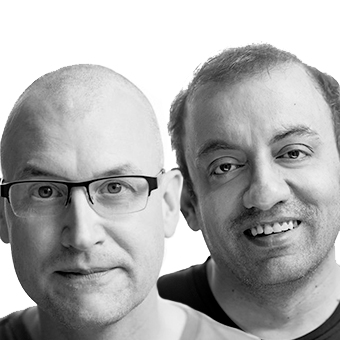- Technology
- SEE MORE
- classical
- general
- talk
- News
- Family
- Bürgerfunk
- pop
- Islam
- soul
- jazz
- Comedy
- humor
- wissenschaft
- opera
- baroque
- gesellschaft
- theater
- Local
- alternative
- electro
- rock
- rap
- lifestyle
- Music
- como
- RNE
- ballads
- greek
- Buddhism
- deportes
- christian
- piano
- djs
- Dance
- dutch
- flamenco
- social
- hope
- christian rock
- academia
- afrique
- Business
- musique
- ελληνική-μουσική
- religion
- World radio
- Zarzuela
- travel
- World
- NFL
- media
- Art
- public
- Sports
- Gospel
- st.
- baptist
- Leisure
- Kids & Family
- musical
- club
- Culture
- Health & Fitness
- True Crime
- Fiction
- children
- Society & Culture
- TV & Film
- gold
- kunst
- música
- gay
- Natural
- a
- francais
- bach
- economics
- kultur
- evangelical
- tech
- Opinion
- Government
- gaming
- College
- technik
- History
- Jesus
- Health
- movies
- radio
- services
- Church
- podcast
- Education
- international
- Transportation
- Other
- kids
- podcasts
- philadelphia
- Noticias
- love
- sport
- Salud
- film
- and
- 4chan
- Disco
- Stories
- fashion
- Arts
- interviews
- hardstyle
- entertainment
- humour
- medieval
- literature
- alma
- Cultura
- video
- TV
- Science
- en
Augmenting Enterprise Productivity, with Altouras Jamie Fleming and Bharat Ahluwalia

One of the best use cases for XR technologies is training and enterprise solutions, as long-time listeners know. Today\u2019s guests, Jamie Fleming and Bharat Ahluwalia from Altoura, pop by to explain how they\u2019re optimizing workplace productivity.\n\n\n\n\n\n\n\nAlan: Hey, everyone. Alan\nSmithson here, with the XR for Business podcast. Today, we're\nspeaking with Bharat Ahluwalia and Jamie Fleming from Altoura about\naugmenting enterprise productivity for frontline workers using\nspatial technologies. All that and more coming up next on the XR for\nBusiness podcast. Jamie and Bharat, welcome to the show, my friends.\n\n\n\nJamie: Hey, thanks, Alan. Super\nhappy to be here.\n\n\n\nAlan: I'm really excited. So,\nBharat, I know offline you were just-- you were mentioning that you\nwere part of the original Hololens team. So I know how you got\nstarted in this. Jamie, you've been building experiences for 15 years\nin technology. So maybe just give us a bit of your background and\nwe'll go from there.\n\n\n\nJamie: Sure, yeah. For starters,\nthis is Jamie. So I actually started out in architecture. I have a\nmasters of architecture, and worked as an architect for a number of\nyears. And that's really where I was given an introduction to 3D\nmodeling and building out immersive experiences in the day-to-day\npractice of design and got the spark of an idea of, hey, I could\ncreate a company where we really just focused on creating\nexperiences, and making them more and more interactive that helped --\nin the early years, particularly -- help designers understand what\ntheir designs were. And over the years, that has just become more and\nmore sophisticated and we've gotten deeper, deeper into the software\nside of things. Now we really have a lot of interesting ways that we\ncan leverage these digital twins to help augment enterprise\nproductivity.\n\n\n\nBharat: And this is Bharat here.\nI got started in this space when I joined the Hololens team. It was\nan interesting experience. The project was top secret, as you know,\nand I wasn't even told what I would be working on until I agreed to\nsign the offer letter. But I knew a couple of key people then said,\n"OK, these guys get involved and it will be an awesome product."\nAnd it was. The first time I saw the vision video and the vision of\nthe device, it was, wow. That's what I want to work on. So I worked\non it for a few years, shipped the V1 of the device and was so in\nlove with this technology, that I decided to leave the company and\nbuild experiences on top of the device and the platform that I was\npart of. I did a small startup that led to being acquired by Studio\n216, which is now named Altoura. And here I am. And I have been\nbuilding Hololens and VR experiences since then.\n\n\n\nAlan: It really comes down to\nthe experiences, because the devices themselves-- the Hololens 2 is a\nmagical piece of kit, but if nothing's on it, it's kind of useless.\nSo you decided to go into the experiences. And what are some of the\nthings that you've been building? Because I've seen some of them, but\nI'll let you guys speak to them. What are some of the experiences\nthat you've been building?\n\n\n\nJamie: Yeah, we're really-- the\none that we're super excited about right now is the work that we've\nbeen doing with Qantas Airlines. So what we've done with Qantas is\nwe've taken the 737-800 cockpit and we've re-created it as a digital\ntwin. And then using Hololens 2, we allow you to interact with that\ncockpit as if you were there, so you could be sitting in your living\nroom or a classroom or anywhere really in the world, networked\ntogether and interacting with functions inside the cockpit, the same\nway that you would do in a physical simulator. So as we know with\nHololens 2, it's tracking all 25+ points on each of your hands. You\njust-- there's very